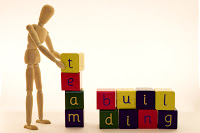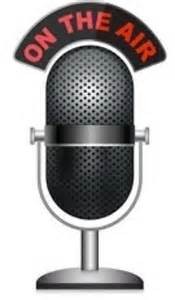From The Inside Out Project On the Air!
IN THE NEWS
New article: http://bit.ly/1GLjDTF at HR.BLR.com.
How to Manage Vacation Requests and Maintain Staffing in Spring and Summer.
Feature on Fit Small Business: http://bit.ly/1bc39X2 
39 Hiring Tips from The Pros.
I’m Human Resources Pro #37!!
Q&A Video: Live from the set!
My Q&A Video Series is now in post production and premier date is coming soon! We filmed several questions and answers with David Title and his team at B ravoMedia in New York City on a snowy day in late February. On hand to do makeup and hair was makeup artist Amy Klewitz and actress Donna DelBueno provided on set coaching, styling and touch ups. Thanks to this fantastic team, the day (while exhausting!) was productive and ran smoothly.
ravoMedia in New York City on a snowy day in late February. On hand to do makeup and hair was makeup artist Amy Klewitz and actress Donna DelBueno provided on set coaching, styling and touch ups. Thanks to this fantastic team, the day (while exhausting!) was productive and ran smoothly.
Questions and answers cover a wide range of workplace topics: co worker conflicts, mandated training, staff-management relations, doing ‘favors’, saying/ hearing ‘Not my Job.’ Hourly employees, managers, supervisors and executives all shared real- life workplace experiences.
Tune in to my YouTube channel to see what other employees are doing in the workplace and what I have to say about it. Will keep you posted on premier date. Thanks in advance for your support!!
Why say THANKS!
This time of year we are all running low on energy, patience and positive attitude. Employees on all levels may be calling out due to weather conditions and illness, and those able to get to work are putting in long hours to pick up the slack. Managers: take a moment to thank those who braved the tough conditions and made it to work. This takes no time at all and goes a long way in boosting morale and getting buy in from your staff.
Don’t do this: Hurricane Sandy (New York City 2012) Large hotel sent home several hourly employees who had walked many miles to get to work and help out. These employees were told, “We don’t need you to stay. Too much overtime.” WOW. You’ve lost those employees. Don’t look to them for help ever again.
Do this: New York City (Winter 2014) Extreme cold and countless snowstorms.
High school principal wrote a letter of appreciation to all staff members with perfect attendance. Letters were placed in staff permanent file. What a  terrific way to acknowledge job well done. Bet that principal has a loyal following.
terrific way to acknowledge job well done. Bet that principal has a loyal following.
Remember, it takes just a moment to say Thanks! Benefits last much longer.
Why aren’t you SMILING?
On a recent TODAY show episode, Hoda and Kathie Lee shared their experience with strangers on the street calling out: “You’re so pretty. Why aren’t you smiling?” The discussion centered on the sexism of this (men rarely- if ever- get these comments) and the expectation that women should perpetually smile.
A similar phenomenon occurs for women (and occasionally men) in customer service positions. Bartenders, food and cocktail servers, cashiers, front desk employees, sales personnel- are expected to SMILE at all times when they are working. Not only is this not physically possible, it is not natural, and assumes a superficial “cheerleader” presence. These employees are working- focusing on the task(s) at hand, managing interactions, responsibilities and stress. The question: Why aren’t you smiling? puts unfair demands on the employee- 1- Answer the question 2- Smile. In the midst of a busy stressful shift, this is distracting and feels patronizing and offensive. The question/demand to smile implies that the job is easy, carefree and fun (not the case) and that the customer has the right to dictate facial expressions (of course not).
Think about this the next time you’re in a restaurant, bar, hotel or store. Evaluate the employee based on job performance and behavior, not the smile (or lack thereof). You’ll see competent customer service employees effectively assisting customers in a variety of ways. Smile included? Maybe, but not always. More on smiling in future blogs.
Recent News and Press
CBS MONEYWATCH: http://cbsn.ws/1xVprFF
Surviving a Black Friday Work Shift
Tips for managing Black Friday stress are useful all year long
REFINERY29.com: http://r29.co/1ugUtS9
 Passive Aggressive Behavior in the Workplace
Passive Aggressive Behavior in the Workplace
Managing your behavior and dealing with coworkers
Who will work on Black Friday?

Black Friday for many of us means shopping, great deals, family, turkey sandwiches and an extra day off work. But for many hourly employees Black Friday is a work day. If you’re scheduled to work (you normally work every Friday), but you really have difficulty managing crowds and need the day off, what do you do? You could approach management and request the day off, but what if the answer is NO? Try working something out with a co worker. If you have a strong relationship, and are willing to give back (I’ll work Christmas Eve for you), you might get Black Friday off. These schedule switches really come in handy and management will usually approve if it doesn’t cost them anything. But the key is a sturdy relationship with your co workers. Be willing to help, and the help will be returned. You may just escape the crowds on Black Friday.
Boundaries on Black Friday

If you are an hourly employee working on Black Friday, you will undoubtedly be dealing with lots of people in crowded areas. The stores, of course will be packed with shoppers, but also restaurants, coffee shops, and hotels will be busy. Depending on your job, you may be required to move through and around large groups of people- waiter, busser, bartender, host/greeter, shelf stocker, sales associate. People are often oblivious, and do not move out of the way. You can’t shove them (although you might like to!) and “Excuse me!” for the 10th time is not working. What do you do? You need to actively establish boundaries and rules for these people. So, the waiter needing to get through the group, could say, “Folks, you need to move over to the side behind this pillar so I have a pathway. Ma’am, on the end there, you need to back up about a foot.” Be specific and clear. You will inevitably hear “Why?” or “What happens if I don’t?” or “I’m fine where I am.” The answer to all of this is, “You need to move so I can do my job and you can get your food.” Said with a strong clear voice (and a smile if you can manage it!) this directive is not offensive or rude. It establishes much needed boundaries for people and allows you to stay in control of the situation. Now you and your co workers can move through and get the job done.
What’s the problem with Team Building?

Employees are often called team members, so it would follow that strengthening or building the team would result in a unified group and more efficient work force. Employers often schedule team building activities, retreats and gatherings to encourage and foster a team spirit. So, what’s the problem? The problem is hourly employees aren’t interested in being on a team. They are hired to do a job and when the shift is over, they are out the door. That is the contract (whether verbal or formally written, as in a Union shop) they enter into when they accept the position. The expectation that hourly employees will welcome the chance to bond with team members (especially if there is no compensation to do so) is not realistic. When I was an hourly employee, I always wondered, What’s the point? And what’s in it for me? Management would do well to answer those questions before urging hourly employees to join the team.

